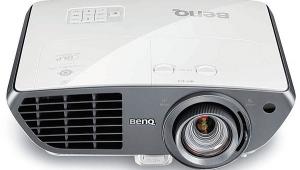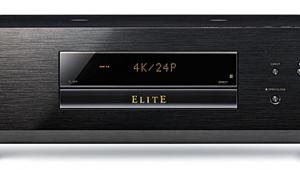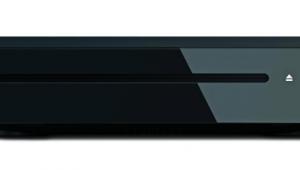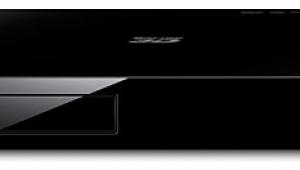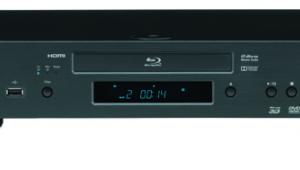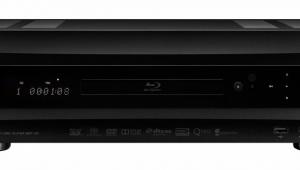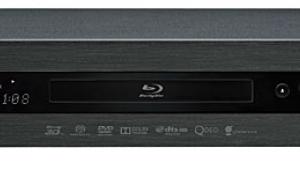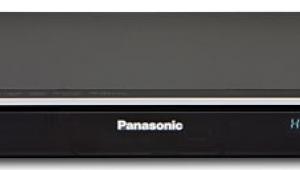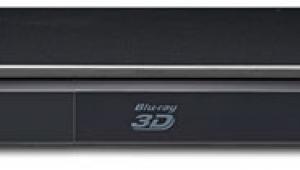Oppo BDP-105 Blu-ray 3D Player

Last year, I had the opportunity to review the Halo P 7 multichannel preamplifier from Parasound (Home Theater, June 2012). For that review, I mated the P 7 with Oppo’s then flagship Blu-ray player, the BDP-95, and it was a match made in heaven. I didn’t do a formal review of the BDP-95, but I made sure I conveyed how highly I thought of the reference Blu-ray player in the review and how its outstanding analog audio section was one of the best I’ve used. For this review, I got to try out Oppo’s successor to the BDP-95, the BDP-105, which builds on the BDP-95’s design and adds some features I honestly never thought I’d see in a Blu-ray player. In fact, I don’t even know if I would categorize the BDP-105 as a straight Bluray player, as it could easily be identified as a digital processor given its new connectivity and processing features for both audio and video. Whatever you want to call it, the BDP-105 shows once again that Oppo isn’t afraid of disrupting the industry and raising the already incredible bar set by its previous products.
The Goods
Oppo’s first Blu-ray player, the BDP-83 (Home Theater, September 2009), was a pixel-perfect Blu-ray player that’s just as much a reference 2D Blu-ray player today as the day it was launched. This creates an interesting issue when reviewing Oppo players.
All of them from the start have been as good as it gets for video playback, so the only real things to talk about are the added features. When you have bitperfect video every time, the only reason to spring for a new player is for something other than video performance. Later came the BDP-93 (Home Theater, May 2011) and BDP-95 (Home Theater, October 2011), which added some streaming features along with 3D playback support and a new chassis. Again, you could stop there and still have one of the best Blu-ray players available today. I honestly didn’t know what Oppo would bring to the table to improve on the last crop aside from simple functionality updates or more streaming features. But my, oh my, how Oppo stepped up.
The BDP-105 shares the basic DNA of the BDP-103 with a few new goodies. In his recent review of the BDP-103 (Home Theater, January 2013), David Vaughn found it to be a top-performing player that continues the tradition already set by Oppo’s previous offerings. But these players are so much more than just standard Blu-ray players. The BDP-103 and BDP-105 share a pretty exciting feature: two HDMI inputs, one on the front and another on the back. These inputs not only allow for switching of two other sources, they give you the ability to utilize the outstanding Marvell QDEO video-processing chip inside the player to deinterlace or scale whatever source you have attached. The new players use an updated QDEO chip from the last generation that scales sources up to 4K resolution. This is a better video-processing chip than what’s found in most AVRs or surround processors on the market today and is more in line with what you’d find in a high-end standalone video processor. The player will also decode legacy surround sound formats or accept highresolution PCM audio from another Blu-ray player. The front HDMI input is even Mobile High-Definition Link (MHL) compatible, giving you the opportunity to use the Oppo with your compatible cell phone or something like the new Roku stick to add even more streaming functionality to the player.

But the BDP-105 takes things even further than the BDP-103. Adding to the HDMI inputs are three audio inputs. On the back panel, you’ll find a TosLink digital connection, a coaxial digital connection, and a USB asynchronous audio input that supports high-resolution digital audio files up to 24 bits/192 kilohertz. This lets you take advantage of the BDP-105’s custom analog audio section, which sports one of the most lauded digital-to-analog converters on the market today, the Sabre32 Reference Audio DAC. The player features two of these DACs, one for the dedicated two-channel output and one for the seven-channel output. Taken all together, you have a very capable audio/video processor here that could easily replace a digital pre/pro, depending on your needs.
The BDP-105 shares a bit of the BDP-95’s aesthetics, though it stands a bit taller than its former sibling. Its front face sports a very elegant and simple design with a machined-aluminum panel and touch-sensitive buttons for most of the controls. In addition to the HDMI input mentioned earlier, there’s a USB input and headphone jack.
Gone are all the analog video outputs included on the BDP-95 with the exception of a diagnostic composite output for using the menus if you get in a tight spot. You still get the dual HDMI outputs and two USB inputs for external drives or Oppo’s included Wi-Fi dongle. The analog audio outputs include RCAs for 7.1 playback, plus a dedicated two-channel output via either XLR or RCA. The XLR outputs are truly balanced differential outputs, which is a rarity for a Blu-ray player (or any other device for that matter). The new features are the second HDMI input and the digital audio inputs mentioned above.
The BDP-105 uses the same Sabre32 Reference Audio DAC used in the BDP-95, but some minor changes have been made. The configuration of the DAC’s channels has been altered to accommodate the new headphone amplifier. The Sabre32 is an eight-channel DAC, and some of those channels are now allocated to the headphone amp as opposed to using all of them for the two-channel output. Oppo also changed the power transformer (previously built by Rotel) and went with the company’s own design. Furthermore, the BDP-105 is a passively cooled player that doesn’t employ a fan like the previous model. I never had an issue with fan noise with my BDP-95, but I’ve heard others comment on it, so I’m sure this will be a welcome addition.
The Best Keeps Getting Better
I won’t go into the BDP-105’s video playback. It’s exactly the same as the BDP-103, and you can read about it in David’s review (available at HomeTheater.com). It’s bit perfect in every way. In other words, you won’t find a better Blu-ray player for reference-quality video playback. I do wish I had the chance to try out its new 4K scaling, but alas, I don’t have a 4K display handy. I can say that I never once had an issue with any material I watched, whether it be 2D or 3D, and the image quality was what I’ve come to expect from Oppo.

